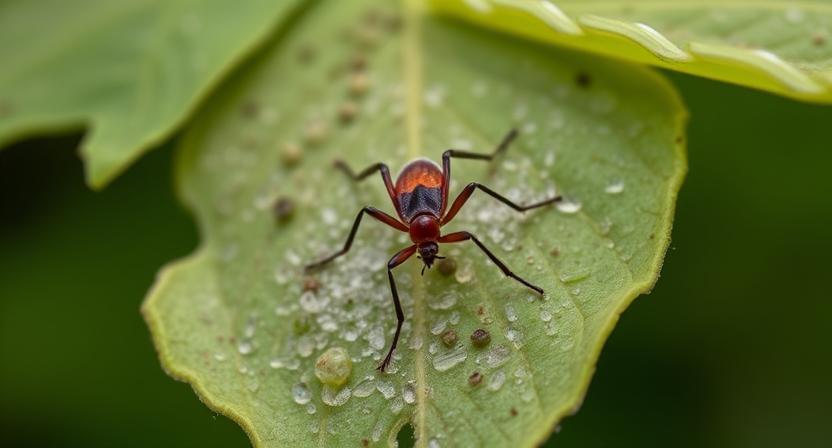Kissing bug disease in the US is no longer rare. Health experts say it is now considered an endemic infection. That means the disease has taken hold and will likely persist for some time. It is spreading quietly across several states, and many people are unaware of it.
What is Kissing Bug Disease?
Kissing bug disease is the common name for Chagas disease. It is caused by a parasite called Trypanosoma cruzi. This parasite is carried by insects known as kissing bugs.

Kissing bugs feed on blood. They often bite people on the face at night. That is why they are called “kissing bugs.” The bite itself is not what spreads the parasite. The bug leaves waste near the bite, and if this enters the body, infection can happen.
How Kissing Bug Disease Spreads
The main way the disease spreads is through contact with bug waste. When a person scratches the bite, the parasite can enter the skin or eyes.
There are other ways as well. A mother can pass it to her child during pregnancy. Blood transfusions and organ transplants can also spread it. In rare cases, food or drink may be contaminated.
Symptoms and Health Risks
The disease often starts with mild or hidden signs. In the early stage, a person may feel fever, fatigue, or body aches. Some get swelling near the eyes or the bite area.
The real danger comes years later. About 20 to 30 percent of people develop chronic health issues. These include heart failure, irregular heartbeats, or enlarged organs in the gut. Many learn they were infected only after serious damage occurs.
Why Experts Say It’s Here to Stay
Kissing bug disease in the US is spreading because conditions allow it to survive. Scientists now see signs of local transmission. That means people are getting infected without leaving the country.
The bugs are found in at least 29 states. Surveys in Texas show that half of the bugs carry the parasite. Wildlife like raccoons, opossums, and dogs act as hosts, keeping the parasite alive.
Climate and land use also play a role. Warmer areas allow bugs to thrive. As people build homes closer to wild areas, they increase contact with infected insects and animals.
Another reason it spreads is low awareness. Many doctors still think of it as a Latin American disease. This leads to missed diagnoses and delayed treatment.
Where Kissing Bugs Are Found
Kissing bugs live across the southern US, but their reach is wider. Texas, Arizona, and New Mexico have many reports. The insects are also found in California, Louisiana, Florida, and more.
Studies suggest their range is expanding. Warmer seasons may allow them to move north. Some states outside the south have confirmed bug sightings.
Public Health Response
The CDC and other groups now call the disease endemic. This shift pushes for more attention in health care.
Blood banks in the US have been testing donors since 2007. This helps reduce the chance of spreading the parasite through blood. Scientists are also tracking bug numbers and infection rates.
But challenges remain. Many doctors are not trained to look for the disease. Patients often go years without knowing they are infected. Public awareness is still low, leaving many at risk.
Prevention at Home
The best defense is avoiding contact with the bugs. Seal cracks in walls and windows. Use screens and check that doors close tightly.
Keep outdoor lights low since bugs are drawn to light. Store woodpiles away from the house. Remove rodent nests and clutter near living areas.
Pets should also be protected. Dogs that sleep outside face a high risk.
Provide clean shelters and check for signs of bugs around kennels.
At night, sleep under protective covers if you live in high-risk areas. Simple steps can lower the chance of contact.
What to Do if You Suspect Exposure
If you think you were bitten, watch for fever, swelling, or fatigue. See a doctor and mention possible contact with kissing bugs.
There are tests to detect the parasite. Drugs can treat the disease, but they work best early. Once heart or gut damage sets in, it cannot be reversed.
People at higher risk, such as those in southern states or with outdoor pets, should ask doctors about Chagas testing. Pregnant women with possible exposure should also get checked.
Why Awareness Matters
Experts warn that kissing bug disease in the US is under-reported. They estimate that hundreds of thousands may already be infected. Most do not know it.
Without action, more people will face hidden risk. Early awareness means better prevention and treatment. It also helps reduce fear by showing that simple steps can lower danger.
Conclusion
Kissing bug disease in the US is not going away. It has moved from being seen as a foreign threat to a homegrown problem. The bugs are spread across many states, the parasite is common in wildlife, and local cases keep appearing.
People should know what the disease is, how it spreads, and how to protect themselves. Doctors should test when there are signs of risk. Families can take simple steps at home to keep bugs away.
The message is clear: this is not a rare infection anymore. It is here to stay. Awareness and prevention are the best tools to stay safe.





